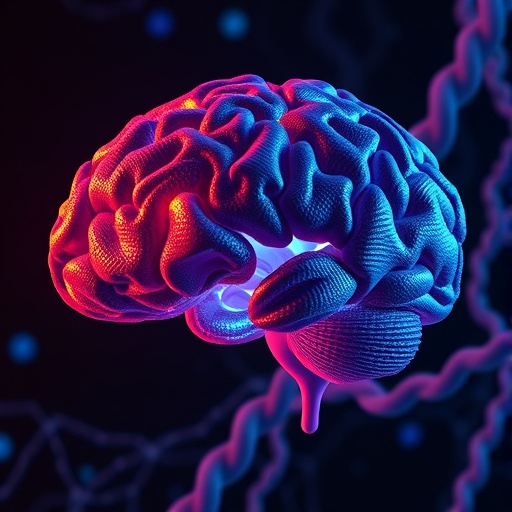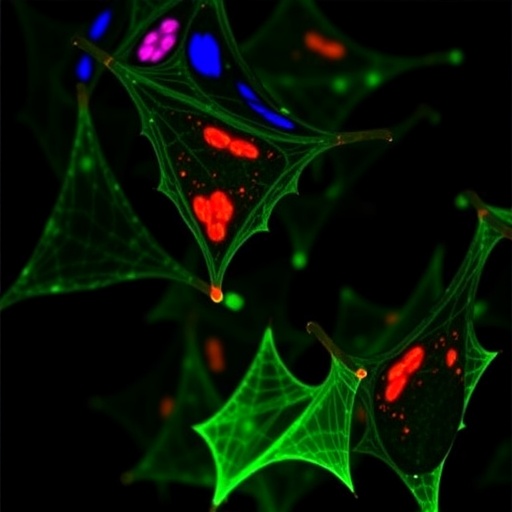In a groundbreaking advancement poised to redefine Alzheimer’s disease therapy, researchers have unveiled compelling evidence that Lecanemab, a therapeutic antibody targeting amyloid-beta (Aβ) pathology, exerts its beneficial effects not merely by blocking amyloid aggregation but by actively stimulating an amyloid-clearing program within microglia. This discovery heralds a paradigm shift that intricately links immunotherapy with microglial engagement, opening new frontiers in the battle against one of the most relentless neurodegenerative disorders afflicting millions worldwide.
Alzheimer’s disease, characterized by the progressive accumulation of amyloid-beta plaques and tau tangles, has long eluded effective treatment options that can alter its devastating trajectory. The recent clinical successes of Lecanemab have sparked intense interest, but the underlying cellular mechanisms through which it mitigates amyloid pathology remained poorly understood until now. The work by Albertini, Zielonka, Cuypers, and colleagues, published in Nature Neuroscience in 2025, presents a comprehensive exploration of how Lecanemab reprograms microglial cells, the brain’s resident immune sentinels, to adopt an active amyloid clearance phenotype.
Microglia are increasingly recognized as pivotal players in neurodegenerative diseases, serving both protective and potentially harmful roles depending on their activation states. The new research delineates how Lecanemab binding to amyloid deposits does more than passively neutralize plaques; it initiates a cascade of molecular signals that mobilize microglia to engulf and degrade amyloid fibrils. This immunomodulatory effect is mediated through enhancement of phagocytic pathways and upregulation of lysosomal enzymes, effectively transforming microglia into aggressive amyloid scavengers.
The authors employed cutting-edge single-cell transcriptomics to precisely map changes in microglial gene expression induced by Lecanemab treatment. Their data reveal a distinct microglial subpopulation marked by enriched expression of genes linked to endolysosomal activity, inflammation resolution, and metabolic adaptation. This transcriptional signature underscores a functional reprogramming rather than generalized activation, suggesting that therapeutic efficacy involves fine-tuning microglial behavior to target pathogenic aggregates selectively without eliciting detrimental neuroinflammation.
In parallel, advanced in vivo imaging techniques demonstrated that Lecanemab-treated microglia exhibit enhanced motility and process extension towards amyloid plaques, resulting in a marked reduction of fibrillar burden over time. The spatiotemporal dynamics observed support the notion that microglial recruitment and amyloid clearance are central to the therapeutic mechanism, emphasizing the importance of cellular cooperation within the neural microenvironment.
Moreover, the study explored the signaling pathways underpinning microglial activation by Lecanemab. The investigators identified critical roles for Fc receptor engagement and downstream activation of Syk kinase, which orchestrates cytoskeletal remodeling necessary for phagocytosis. Pharmacological inhibition of these pathways abrogated amyloid clearance, confirming their indispensability and highlighting potential adjunctive therapeutic targets that could amplify treatment benefits.
Importantly, the attenuation of amyloid pathology was accompanied by preservation of synaptic integrity and reduced neuroinflammation, indicating that Lecanemab not only clears toxic aggregates but also fosters a neuroprotective milieu. Electrophysiological assessments revealed improved synaptic transmission in treated animals, aligning molecular and functional outcomes in a compelling narrative of restored neuronal health.
The implications of these findings extend beyond Alzheimer’s disease. They provide a robust framework for understanding how antibody-based immunotherapies can harness the central nervous system’s intrinsic immune machinery, specifically microglia, to combat proteinopathies. By elucidating the cellular and molecular choreography of amyloid clearance, this research offers a blueprint for designing next-generation therapeutics that optimize microglial engagement while mitigating adverse effects.
This pioneering exploration also challenges the previously held assumption that passive immunization merely passively lowers amyloid levels. Instead, it positions microglia as active partners orchestrated by Lecanemab to achieve plaque clearance. This paradigm fosters optimism for combination strategies that simultaneously target amyloid accumulation and microglial function, potentially offering synergistic benefits.
From a translational perspective, the identification of microglial gene signatures and signaling pathways modulated by Lecanemab may serve as biomarkers to monitor patient response, enabling personalized therapeutic regimens. Furthermore, the delineation of molecular effectors involved in microglial reprogramming paves the way for novel small molecule compounds that could mimic or enhance antibody effects, broadening the therapeutic arsenal.
Nevertheless, the authors caution that while Lecanemab’s induction of amyloid-clearing microglial programs represents a vital mechanism, the heterogeneity of microglial responses across disease stages and brain regions demands further investigation. Understanding how systemic factors, aging, and comorbidities influence microglial capacity to respond to such therapies will be essential for optimizing clinical outcomes.
This landmark study epitomizes the convergence of molecular neuroscience, immunology, and pharmacology to unravel the complexities of Alzheimer’s disease therapeutics. It underscores the transformative potential of targeting innate immune pathways to not only neutralize pathogenic proteins but to empower endogenous cellular systems for durable neuroprotection.
As the Alzheimer’s field progresses, the insights gleaned from Albertini and colleagues establish a compelling rationale to enhance microglial amyloid clearance mechanisms, heralding a new chapter in developing disease-modifying therapies. With Lecanemab as a trailblazer, this approach offers renewed hope to millions affected by Alzheimer’s and their families, marking a significant stride towards conquering this formidable neurological challenge.
Subject of Research: Alzheimer’s disease therapy mechanisms and microglial amyloid clearance induced by Lecanemab.
Article Title: The Alzheimer’s therapeutic Lecanemab attenuates Aβ pathology by inducing an amyloid-clearing program in microglia.
Article References:
Albertini, G., Zielonka, M., Cuypers, M.L., et al. The Alzheimer’s therapeutic Lecanemab attenuates Aβ pathology by inducing an amyloid-clearing program in microglia. Nat Neurosci (2025). https://doi.org/10.1038/s41593-025-02125-8
DOI: https://doi.org/10.1038/s41593-025-02125-8
Tags: amyloid plaques tau tanglesamyloid-beta pathology treatmentcellular mechanisms of amyloid clearanceclinical successes of Lecanemabimmunotherapy neurodegenerative disordersLecanemab Alzheimer’s disease therapymicroglia role in Alzheimer’smicroglial activation amyloid clearanceNature Neuroscience 2025 studyneuroinflammation and neurodegenerationreprogramming microglial cellstherapeutic antibodies in Alzheimer’s





